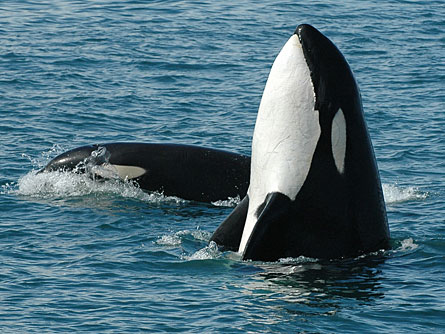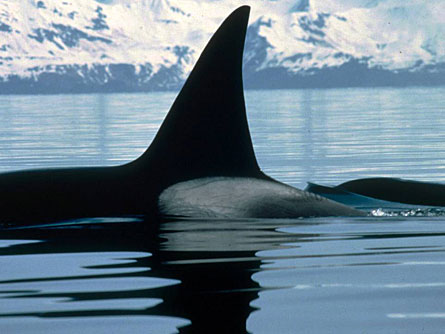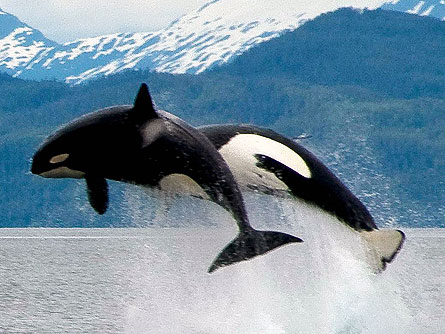Exxon Valdez killed future for some killer whales
Whales are majestic long-lived captains of the sea. Killer whales, or orcas, are my family’s favorite species, which is why we trekked to the Gulf of Alaska and Vancouver, B.C., last summer to view them up close. And they were magnificent trips. In one case, a pair dove right under the 12-person Zodiac we were riding in — just a long arm’s reach away.



This goes a long way toward explaining my interest in the orcas that had been around when the Exxon Valdez spill dumped almost 11 million gallons of crude oil into southern Alaska’s Prince William Sound, 20 years ago this week. Two groups of killer whales were present. And neither has recovered to their pre-spill abundance, Craig Matkin told me last week. This marine mammal biologist is executive director of the North Gulf Oceanic Society in Homer, Alaska, and has studied area orcas since the spill.
Two types of killer whales visit Prince William Sound. The so-called residents eat fish and squid. Transients dine on mammals. Although they look alike and often inhabit the same areas, resident and transient orcas are like subspecies. They don’t interbreed — and maybe haven’t for thousands of years.
The most imperiled group in Prince William Sound are the transients that belong to a population known as AT-1. Normally, biologists refer to groups of whales as a pod. But in AT-1’s case, its seven animals are the sole remaining remnant of their population. No other orcas anywhere belong to their group — which is genetically distinct. These whales even communicate with a totally novel dialect, Matkin’s team has shown.
In 1988, this small group consisted of 22 whales. The oil spill knocked its population down to 13. Since then, there has been no — as in zero — reproduction within this group, Matkin says. Meanwhile, the older males have been dying off. Orcas can live to around 60.
The youngest male is clearly stunted, he says, although no one knows why. The animals do carry substantial residues of certain persistent organic pollutants in their blubber, such as PCBs and DDT. These are potentially toxic and could affect reproduction. Matkin attributes their presence in Alaskan waters to plumes of air pollution emitted in China and Southeast Asia.
Against this backdrop, “I don’t want to make it sound like the oil spill is solely responsible for AT-1’s decline,” Matkin says. “It just exacerbated an already bad situation.”
These animals never touch a fish or squid, but instead dine on sea lions, porpoises, other whales — but especially harbor seals. And prior to the spill, harbor seal numbers had been dropping. AT-1’s population was already small, so when the spill slammed this population, it went into a tailspin, Matkin says: “The spill was just the nail in their coffin.” He says he’s now forced to watch this group slowly go extinct.
It sounds heartbreaking, I said. “Yes,” he agreed, “it really is.”
A fish-eating pod of orcas lost 13 members to the spill — a third of their family grouping. Known as AB, this pod is just a small part of a larger population of more than 600 killer whales: the so-called Southeast Alaska residents. Shortly after the spill, “We predicted this pod would recover in about 12 years.” But the animals that had succumbed to the spill were mainly females and juveniles. These are animals in age classes that ordinarily face only about a one percent chance of dying per year; they’re also the members most able to rebuild a hammered pod.
Taking these factors into consideration, Matkin says, the slow recovery of this pod now makes more sense. “Instead of taking 12 years, we now expect it to take 30.”
Another big surprise in following this group has been the way it fractured. Usually a pod remains together forever, following the big mamma. But AB’s matriarch apparently died during or shortly after the spill, and in her absence the pod’s structure weakened. Within a short period, a segment of the pod departed and began hanging out with another group: the AJ pod.
“We thought it might be a temporary thing, but they’ve been swimming with this other group of residents since the spill.” Matkin says that it’s like this contingent looked at their motherless pod “and said ‘We’re out of here, you losers!’”
This pioneering behavior has never been witnessed before, Matkin says. And it’s not like the animals have totally merged with the other pod. After all, they don’t even speak the same dialect. Instead, he says, it appears more likely they just hang out with AJ because it’s in the newcomers’ vested self interest: AJ is one of the most successful resident pods.
What lesson does Matkin take from his decades of orca-watching? When family structure is disrupted for whatever reason, recovery can prove a very long and perilous struggle.
NEXT: Exxon Valdez: Tidal waters still troubled






